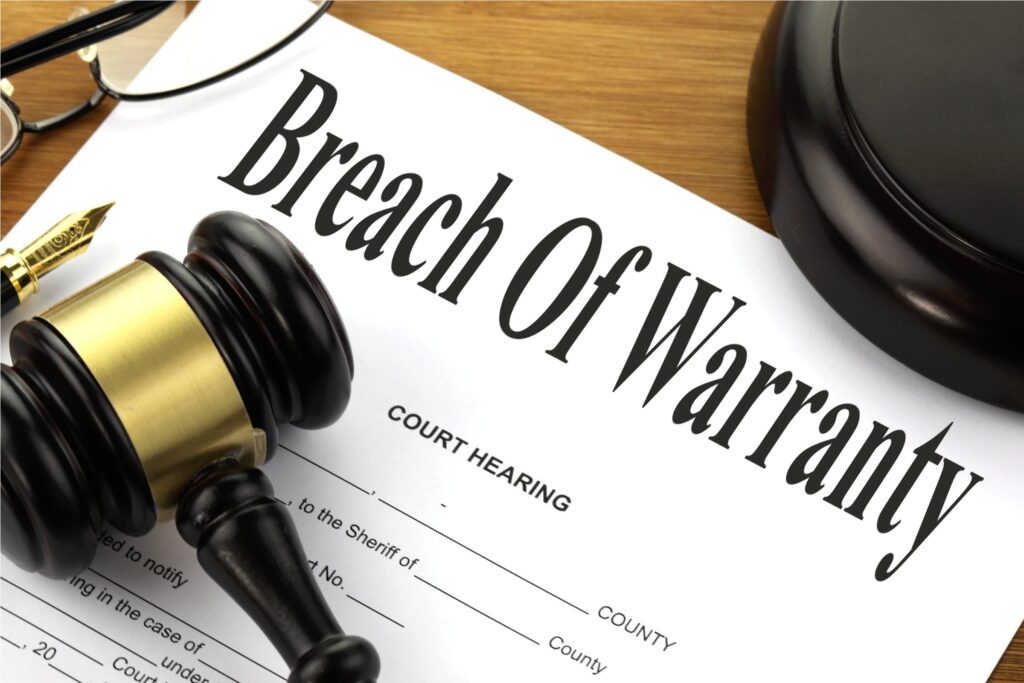As a consumer, it is natural to expect that the products you purchase will work as they are intended to. However, this is not always the case. Sometimes, products fail to live up to their promises, leaving consumers with defective goods. In such cases, the issue of breach of warranty arises. In this essay, we will discuss everything you need to know about breach of warranty, including its definition, types, and how to handle such situations.
What is a Breach of Warranty?
In simple terms, a breach of warranty refers to a failure of a product to conform to the promises made by the manufacturer or seller. A warranty is a written or oral agreement between the manufacturer or seller and the buyer, in which the former promises to repair, replace, or refund the cost of the product if it fails to work as intended. The warranty can cover any aspect of the product, including its performance, quality, or safety.
Types of Warranty
There are two main types of warranty: express warranty and implied warranty.
1. Express Warranty
An express warranty is a written or oral statement made by the manufacturer or seller, describing the quality, performance, or safety of the product. It can be explicit, such as “This product is guaranteed to work for two years,” or implicit, such as “This shampoo makes your hair grow thicker and faster.”
2. Implied Warranty
An implied warranty is a guarantee of quality or performance that is not written down but is presumed to exist. There are two types of implied warranty:
a) Merchantability: This guarantees that the product is of reasonable quality and fit for its intended purpose.
b) Fitness for a particular purpose: This guarantees that the product is suitable for a specific use or purpose as specified by the buyer, and the seller is aware of this purpose.
How to Handle Breach of Warranty
If you have purchased a product that fails to live up to its warranty, you have the right to take legal action against the manufacturer or seller. Here are the steps to follow:
1. Review the Warranty
The first step is to review the warranty to determine whether the product’s failure qualifies as a breach of warranty. If the warranty has expired, the manufacturer or seller is no longer accountable for the product’s performance.
2. Contact the Manufacturer or Seller
Contact the manufacturer or seller and let them know about the breach of warranty. Provide them with any documents, such as receipts or warranties, that support your complaint. If the manufacturer or seller refuses to address the issue, you can proceed to the next step.
3. Get Legal Assistance
If the manufacturer or seller fails to offer a remedy, you can seek the advice of a qualified attorney who specializes in product liability law. A knowledgeable attorney will review your case and determine if you are eligible for compensation.
Summary:
A breach of warranty can be frustrating and disheartening. However, if you have a product that failed to live up to its promises, you have options. Review the warranty, contact the manufacturer or seller, and seek legal assistance. By taking these steps, you can recover damages for any losses you incurred due to a defective product. It is essential to remember that as a consumer, you have the right to demand quality products that work as advertised.
In simple terms, a breach of warranty refers to a failure of a product to conform to the promises made by the manufacturer or seller. A warranty is a written or oral agreement between the manufacturer or seller and the buyer, in which the former promises to repair, replace, or refund the cost of the product if it fails to work as intended. The warranty can cover any aspect of the product, including its performance, quality, or safety.
Read More: Harley Davidson’s Production Stoppage Was Caused by Non-compliant Brake Lines



